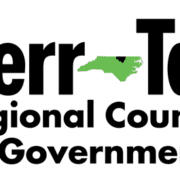Country Snacks Mfg. Named Vance Co. Small Business Of The Year
Country Snacks Manufacturing was named Vance County Small Business of the Year Wednesday by the Henderson-Vance Chamber of Commerce.
The business, founded in 2000 by Dwight Frazier and now run by daughter Angie Jacobs, makes a variety of snacks like pork rinds and pork skins in bags with the familiar Carolina Country Snack logo.
In presenting the award, Ronald Bennett, chairperson of the Henderson-Vance Chamber, told the group of about 40 that the company started out with a few employees and has grown to about 35. A partnership with Wise Foods has meant the crunchy snack foods have a much wider distribution now. “And it all started right here in Henderson,” Bennett said.
Upon accepting the award, Jacobs said she is proud to live in Henderson. “We love where we live,” she said. “We’re very thankful for this award and we appreciate it.”
Three other Chambers were represented at Wednesday’s event and announced their Small Business winners as well. The luncheon was held at Henderson Country Club.
Granville County Chamber Executive Director Lauren Roberson awarded Randall Huff of Huff Consulting LLC the Small Business of the Year for Granville County. In accepting the award, Huff said his business’s open house was in August 2021, and the reception from the community was a welcoming one.
“We’re in the right place to be able to help people in the right way,” he said. “We look forward to being a pillar in the community for a long time.”
In Franklin County, the Small Business of the Year went to Cook Shack Catering LLC and REMAX Premier Realty is the winner in Person County.
Representatives of the N.C. Rural Center were the guest speakers at the awards luncheon. Miles Kirksey and Tori Keeton shared updates about the role small businesses play in the economy and what that means for rural areas.
Kirksey said Tier 1 and Tier 2 counties have seen the most growth in new small businesses in 2020-21: Vance County has seen a 110 percent growth in new businesses, with Warren coming in at 91 percent, followed by Granville with 89 percent, Person with 86 percent and Franklin with 80 percent.
“I’m excited to see the growth of these five counties,” Kirksey said, adding that the more rural counties should be mindful of the benefits they can offer.
“Rural is not just a place,” Kirksey said. “It’s a way of life.”









